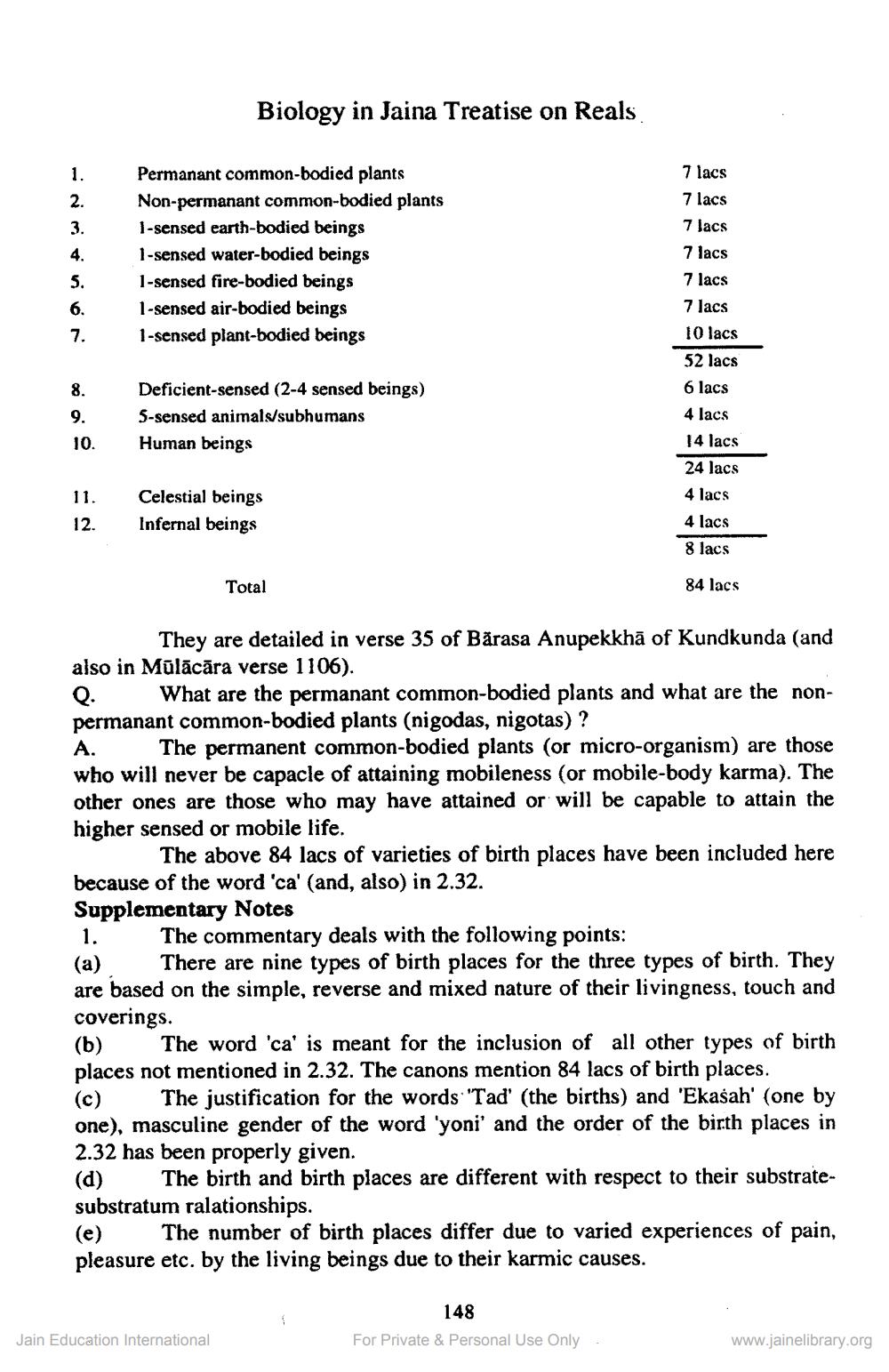________________
Biology in Jaina Treatise on Reals
Permanant common-bodied plants Non-permanant common-bodied plants 1-sensed earth-bodied beings 1-sensed water-bodied beings 1-sensed fire-bodied beings 1-sensed air-bodied beings 1-sensed plant-bodied beings
7 lacs 7 lacs 7 lacs 7 lacs 7 lacs 7 lacs 10 lacs 52 lacs 6 lacs 4 lacs 14 lacs 24 lacs 4 lacs 4 lacs
Deficient-sensed (2-4 sensed beings) 5-sensed animals/subhumans Human beings
.
O
11. 12.
Celestial beings Infernal beings
8 lacs
Total
84 lacs
They are detailed in verse 35 of Bărasa Anupekkhā of Kundkunda (and also in Mulācāra verse 1106).
What are the permanant common-bodied plants and what are the nonpermanant common-bodied plants (nigodas, nigotas) ? A. The permanent common-bodied plants (or micro-organism) are those who will never be capacle of attaining mobileness (or mobile-body karma). The other ones are those who may have attained or will be capable to attain the higher sensed or mobile life.
The above 84 lacs of varieties of birth places have been included here because of the word 'ca' (and, also) in 2.32. Supplementary Notes
1. The commentary deals with the following points: (a) There are nine types of birth places for the three types of birth. They are based on the simple, reverse and mixed nature of their livingness, touch and coverings. (b) The word 'ca' is meant for the inclusion of all other types of birth places not mentioned in 2.32. The canons mention 84 lacs of birth places. (c) The justification for the words 'Tad' (the births) and 'Ekasah' (one by one), masculine gender of the word 'yoni' and the order of the birth places in 2.32 has been properly given. (d) The birth and birth places are different with respect to their substratesubstratum ralationships. (e) The number of birth places differ due to varied experiences of pain, pleasure etc. by the living beings due to their karmic causes.
148
Jain Education International
For Private & Personal Use Only
www.jainelibrary.org




